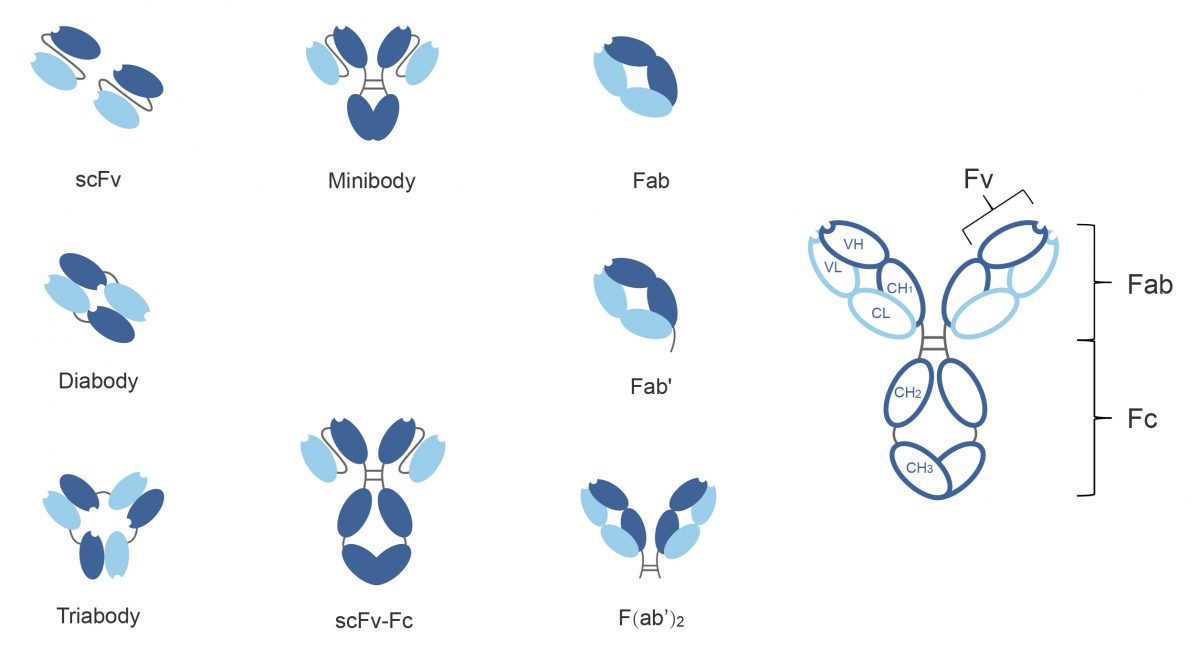Fab Fragment Antibody: Understanding Its Role in Targeted Therapies

Antibody-based therapies have revolutionized modern medicine, offering highly specific treatment options for various diseases, including cancer, autoimmune disorders, and infectious diseases. Among these, the fab fragment antibody has gained significant attention due to its unique structure and functional advantages. Unlike full-length antibodies, Fab fragments provide targeted treatment with reduced immune system activation and improved tissue penetration, making them valuable tools in both research and clinical applications.
The fab fragment antibody is a smaller, antigen-binding region of an antibody produced by enzymatic digestion. This fragment retains high specificity for target molecules while eliminating the Fc region responsible for immune system interactions. As a result, Fab fragment antibodies are widely used in targeted therapies, drug delivery systems, and diagnostic applications.
Structure of Fab Fragment Antibody
The Fab fragment consists of two primary components:
- Variable Regions (VH and VL): These regions are responsible for antigen recognition and binding.
- Constant Regions (CH1 and CL): These stabilize the antibody structure and contribute to overall binding affinity.
Fab fragments are generated from monoclonal antibodies through enzymatic cleavage, typically using papain or pepsin. This process results in a smaller antibody fragment that retains antigen-binding capabilities while lacking the Fc region.
Advantages of Fab Fragment Antibodies in Targeted Therapies
1. Reduced Immunogenicity
One of the major advantages of Fab fragment antibodies is their reduced ability to trigger immune responses. Without the Fc region, these antibodies do not interact with immune cells, making them safer for therapeutic use in conditions where immune activation is undesirable.
2. Enhanced Tissue Penetration
Due to their smaller size compared to full-length antibodies, Fab fragments exhibit improved tissue penetration. This property is particularly beneficial in cancer therapy and imaging applications, where reaching tumor sites effectively is crucial.
3. Rapid Clearance from the Body
Fab fragment antibodies have a shorter half-life in circulation, which can be advantageous for applications requiring quick systemic clearance. This property reduces the risk of prolonged immune suppression and lowers potential side effects.
4. Improved Stability and Affinity Engineering
Researchers can engineer Fab fragments to enhance their stability and binding affinity. These modifications make them more effective in targeting specific disease markers and developing novel therapeutic strategies.
Applications of Fab Fragment Antibodies in Medicine
1. Cancer Treatment
Fab fragments are used in cancer immunotherapy to target tumor-specific antigens while minimizing immune-related side effects. They are often conjugated with cytotoxic drugs or radionuclides for targeted delivery to cancer cells, improving treatment efficacy.
2. Autoimmune Disease Therapy
Fab fragment antibodies are employed to block specific immune system components involved in autoimmune disorders. By neutralizing harmful cytokines or cell surface receptors, they help regulate immune responses without causing widespread immune suppression.
3. Cardiovascular Disease Treatment
In conditions such as acute coronary syndrome, Fab fragments are used to inhibit platelet aggregation by targeting glycoproteins involved in blood clot formation. This reduces the risk of heart attacks and stroke in high-risk patients.
4. Ophthalmic Applications
Fab fragment antibodies play a key role in treating eye diseases such as age-related macular degeneration (AMD). By targeting vascular endothelial growth factor (VEGF), they prevent abnormal blood vessel growth and reduce vision loss.
5. Infectious Disease Management
Fab fragments are used in neutralizing antibodies for viral infections, including COVID-19. Their ability to bind viral proteins with high specificity helps in preventing viral entry into host cells.
6. Diagnostic and Imaging Applications
Fab fragments are widely used in medical imaging for detecting disease biomarkers. Their small size allows them to access deep tissue regions, improving the accuracy of imaging techniques such as positron emission tomography (PET) and single-photon emission computed tomography (SPECT).
Challenges and Future Perspectives
Despite their advantages, Fab fragment antibodies have certain limitations:
- Shorter Half-Life: Rapid clearance from circulation may require frequent dosing in therapeutic applications.
- Manufacturing Complexity: Producing stable Fab fragments requires advanced biotechnological processes.
- Limited Effector Functions: The absence of the Fc region eliminates certain immune system interactions, which may be necessary for some therapeutic applications.
To overcome these challenges, researchers are developing modified Fab fragments with extended half-lives, improved stability, and enhanced binding properties. Advances in protein engineering and nanotechnology are expected to further expand the applications of Fab fragment antibodies in targeted therapies.
Conclusion
Fab fragment antibodies are powerful tools in targeted therapies, offering high specificity, reduced immunogenicity, and improved tissue penetration. Their applications in cancer treatment, autoimmune diseases, cardiovascular conditions, and infectious disease management highlight their therapeutic potential. As biotechnology continues to advance, Fab fragment antibodies will play an increasingly important role in precision medicine, leading to more effective and safer treatments for a wide range of diseases.





